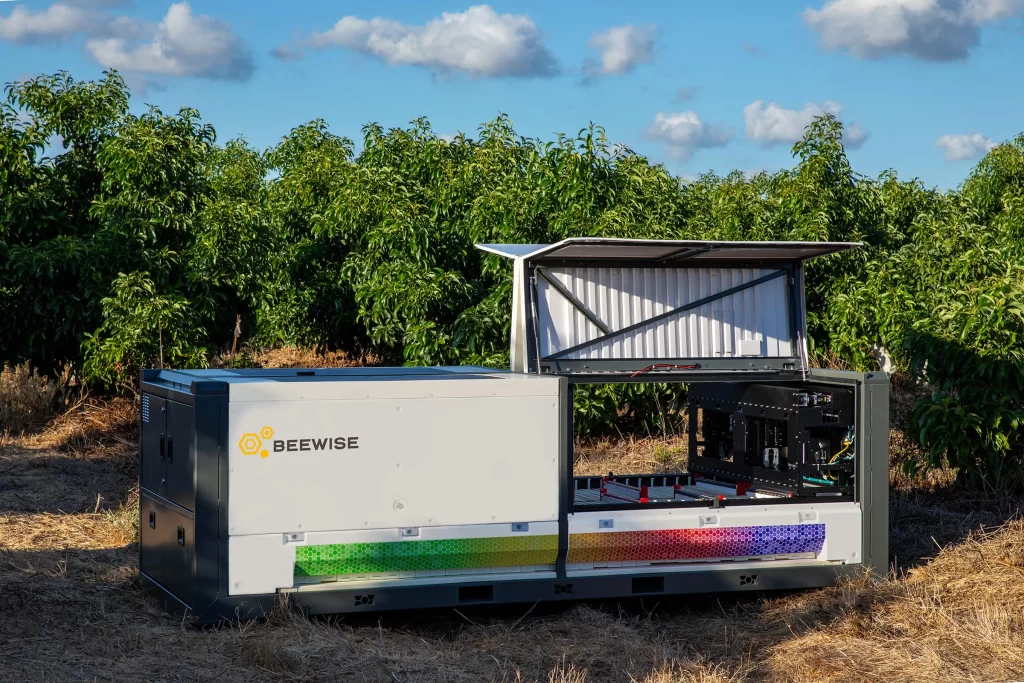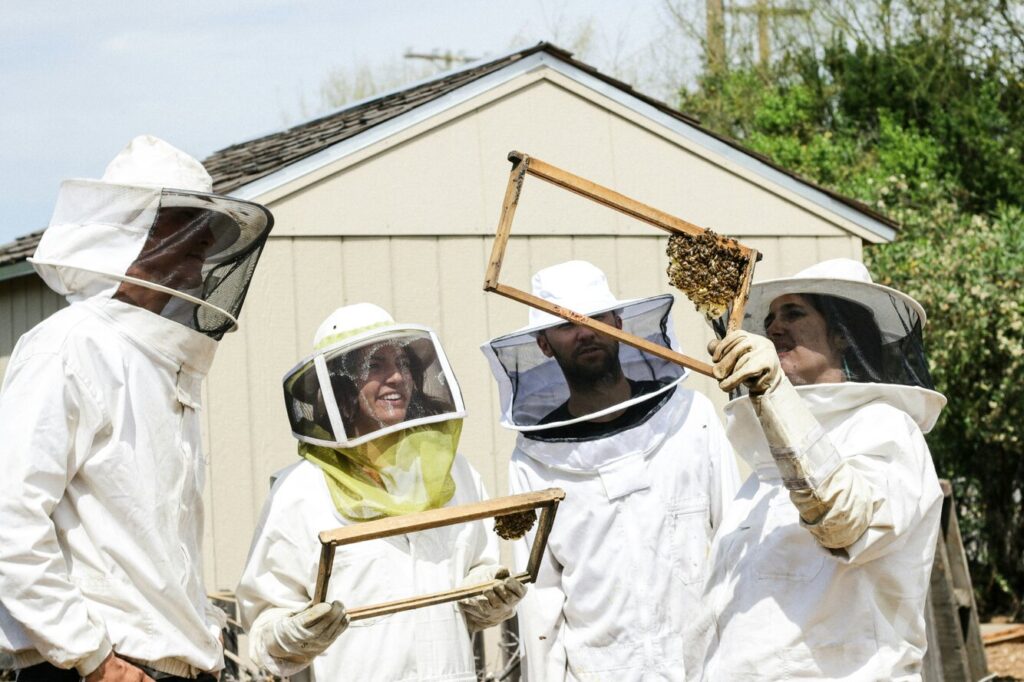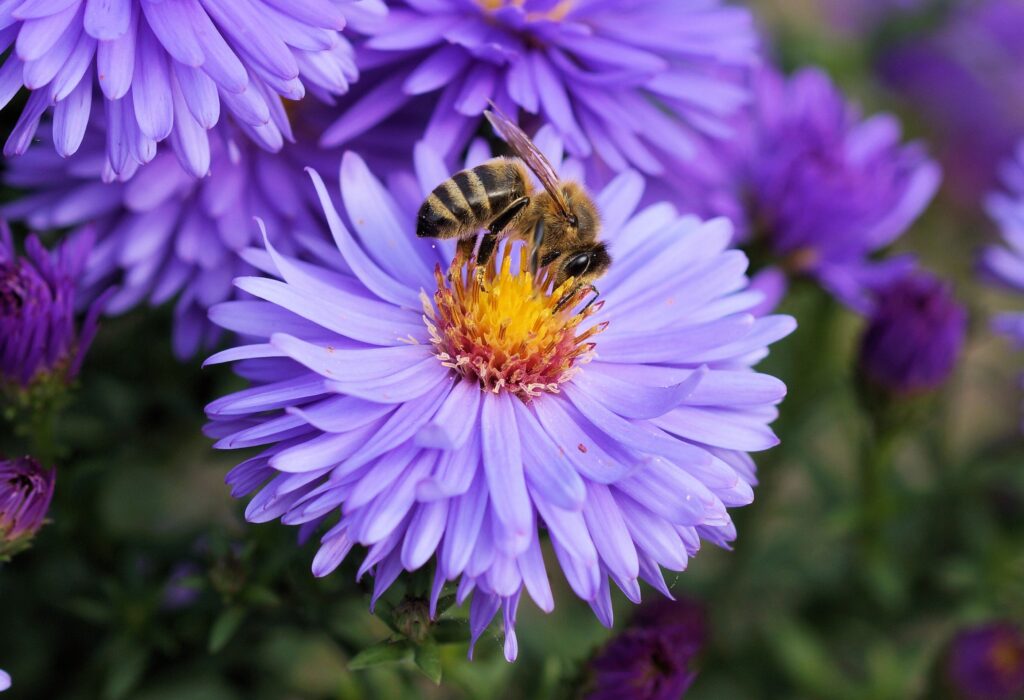Apples and avocados, peppers and tomatoes are just some of a long list of crops that need bee pollination to survive. But bees are dying at an alarming rate, threatening future food security.
According to Friends of the Earth, the world’s largest environmental organization that operates in 73 countries, the future survival of bees on the planet is not guaranteed. In 2020 alone, it says, nearly 46 percent of honey bee colonies were lost, while there were also drastic declines in wild bee populations.
A beekeeper for decades, Eliyah Radzyner was determined to tackle the issue. With his vast experience of beekeeping, Radzyner invited his friend and entrepreneur Saar Safra to collaborate on creating an AI-operated beehive.
Together, the two set up Beewise, a robotic hive that monitors the insects around the clock through video cameras and temperature sensors in order to help understand what was killing the bees.
“You can actually know if there is a disease or if the bees are hungry and the AI sees all that,” Safra tells NoCamels.

The hive itself is a box-like structure that can support 10 completely separate bee colonies at once.
“They don’t mix and match because they all have separate queens and they all behave differently,” Safra says.
To move the bees from their original hive to the new AI-driven one, the frames of honeycomb are placed in the new location along with the queen – and the rest of the hive follows automatically.
According to Safra, it takes the bees a few hours to orient themselves to their new location, but once they do, they are completely acclimated.
The AI slowly identifies how the bees act as a colony inside the hive. The automated system can feed the bees and if necessary dose them with medication. Both of these functions are carried out through the hive’s robotic arm, which is also operated by AI. Should the supply of food and medication run low, the algorithm alerts the beekeepers – and if a predator manages to make its way into the hive, the arm can drive them off.

The solar-powered hive has gaps on all sides to allow bees to enter and exit unhindered. Each gap can be opened and closed by the AI system, which also controls all the other robotic mechanisms of the hive, including the cameras and sensors. The gaps are completely sealed when the beekeepers know that pesticide – one of the main causes of bee deaths – is being used nearby, keeping the insects safe.
According to Safra, the AI has a 99.98 percent success rate when it comes to caring for the bees – giving them medication, controlling the temperature and providing nourishment.
Sign up for our free weekly newsletter
Subscribe“It’s very accurate at identifying and providing the right solution,” he says.
Even so, he says, the AI platform still cannot prevent a small number of bee deaths, with around eight percent of the hive dying naturally every year.
The system is not entirely human-free. The bees still make honey that needs to be extracted, and the AI hive owners use the same method that is used in normal wood hives: removing the outer panels of the hive, taking out the honeycombs and manually gathering the honey.

Safra believes that the most important part of the Beewise project is having a constant check on the bees, to catch any potential problems at an early stage.
“Beekeepers are always either too late or they don’t know what to do [to protect the bees],” he says.
Beewise is already available in the US (its biggest market), Israel and the UAE, and supplements its revenue with backing from venture capital funds.
And Safra hopes to grow the company until wooden hives are no longer needed, something he predicts will happen in the near future.
“We don’t believe that the wooden box, the traditional beehive, is good for bees any longer,” he says.
He insists that BeeWise does not want to change the world of beekeeping, just make it easier to take care of the honey makers.
“We don’t interfere with the biology of the bee,” he says.
Related posts

Harnessing Our Own Bodies For Side Effect-Free Weight Loss

Israeli Device Is New, Drug-Free Solution For Men Coping With ED





Facebook comments